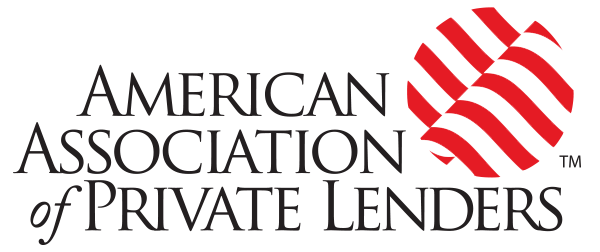Private lenders must be aware of the new trends emerging in the residential asset classes.
The real estate market of 2020 transitioned from uncertainty to unforeseen heights, but where is it now, in 2021? And what trends have emerged from a market movement that took on a life of its own?
Although they navigated a series of hits early in the pandemic, residential asset
classes—single-family, condos/townhomes, and multifamily properties—are now in the midst of some trends that put them in a league of their own.
Before dissecting the impact the pandemic posed for various property types, let’s take a step back and consider a holistic view that actually accounts for people. Discussion of any current trend would be incomplete and disjointed if we did not consider their impact on human lives.
The notion of a highly contagious infectious disease prompted one of the strongest influencers known to humankind: fear. Specifically, fear of being too close to other human beings. This fear, combined with the widespread ability to work remotely, motivated city residents in crowded, vertical spaces to head to the suburbs and small towns.
After months of sheltering in place, the idea of spending 24/7 with household members in close quarters also became an important force that ignited home purchases, with a preference for new or fully updated homes. The idea of more square footage, yards, functional floorplans, and homes that could function as workspaces, educational spaces, and multi-generational spaces turned homebuying into a downright quest.
The following selection of the four most notable and relevant real estate trends in residential asset classes was guided by data from the Emerging Trends in Real Estate 2021 report compiled by PwC and the Urban Land Institute. Considering a multitude of factors like job growth and population migration, to name a few, the following trends stood out.
1. Single-Family Housing, Rentals, and Investments
According to the California Association of Realtors’ 2020 Annual Housing Market Survey, buyer preferences have changed to the tune of 40.2% of buyers opting for a single-family home instead of a condo, townhome, or apartment—and 38.8% of buyers opting for a bigger home.
Emerging Trends in Real Estate 2021 reported that single-family rental subsectors have the highest ROI potential. With the great migration of families moving and seeking detached rentals with more space, the real estate opportunity is one you’re already quite familiar with. Of the nation’s 46 million rental units, about a third are single family. The build-to-rent market is growing as well, and about 12% of new construction of single-family homes this year has been in the area of rentals.
The report also confirms the single-family rental subsector is attracting increased investor interest. Americans are traveling again, and they are opting for more privacy and distancing than traditional hotels provide, making short-term rentals for vacation homes a rapidly growing investment category.
In addition, with the slowdown in vacation travel, more people are simply buying vacation homes as second homes. The flexibility to work from home and the desire to move away from metropolitan areas has motivated investors and homebuyers to flock to the wide-open spaces, small towns, and resort areas, resulting in the vacation home share of total sales rising to the highest level in four years.
2. Characteristics of Condo-Mania
Although the demand for single-family housing has driven down inventory and affordability, people’s desire for their own home hasn’t budged. Coupled with low mortgage rates, more first-time buyers have turned to the condo market.
A July 2021 report from the California Association of Realtors noted that condo/townhome sales decreased 2.1% for repeat buyers in 2020 as compared to 2019, but the appeal was evidently there for first-time buyers who drove a 3.1% increase in the condo/townhome category overall. Condo and townhouse prices remained high after a big recovery in June, and they’re up $100,000, on average, since last summer.
So, while condos might not be the first choice for many compared to single-family homes, they have fit the mold for buyers who have been wanting to buy for some time, have a desire for more urban-like conveniences, and are focused more on low payments than price appreciation.
3. Multifamily Market Movement
Multifamily, as a residential asset class, has emerged from the pandemic in an extremely strong position. It has rebounded from the initial negative impact on demand and performance, due largely to an unquenched need for housing and the recovering economy. As a result, rent growth has been healthy in recent months. The COVID-19 vaccine has allowed people to resume most of their normal activities and has given people a sense of being able to return safely to their urban roots.
According to the U.S. Multifamily Outlook Summer 2021 market report by Yardi Matrix, all top 30 metros on a national basis are performing well from a rent growth standpoint. People are returning to cities in droves. Just think about students and recent graduates who moved in with family during the pandemic and are now returning to their metropolitan neck of the woods.
With that said, it was reported that approximately 174,000 units were absorbed nationally through May, putting 2021 on track to be among the hottest years since the 2008 recession. A wild second quarter growth put asking rents up 6.3% year-over-year as of June. Rent growth can’t continue at these levels indefinitely, but the stage is set for above-average growth to persist for months.
4. Bridge versus Rental: 2021 in Review
When it comes to the loan activity associated with these residential asset classes, the data speaks for itself. According to Nema Daghbandan, Esq., partner at Fortra Law, it was no surprise—2021 shows very strong activity in the residential market.
“From a trend standpoint, bridge loans, which are primarily construction loans, are holding fairly steady from a rate environment with a national average of 9.75% for the year analyzed over 1,800 loan transactions with an average loan amount of $612,504,” said Daghbandan. “Quarter over quarter, bridge loans have varied from a low of 9.58% to a high of 10.05%, showing a steady rate environment for residential bridge loans.”
Daghbandan continued: “Rental loans continue to expand market share and rates continue to compress as most of these loans are securitized, and the cost of capital continues to be driven down. The national average for 2021 rental loans is 4.99% analyzed over 1,000 loans, with an average loan amount of $346,160. The quarterly changes in interest rate here are more dramatic with first quarter average interest rates of 5.47% and third quarter averaging 4.65%. Similarly average loan amounts in rentals are rising with the first quarter averaging $278,067, and the third quarter to date showing $431,894—an approximate 50% increase in average loan size.”
As a lender right now, we must all continue to be vigilant and adaptable. We can argue that COVID-19 did not necessarily create new trends, but instead accelerated trends already underway. What we do know is the investor real estate market is always in flux. With home values soaring, a continued spike in buyer demand, and low mortgage rates, the real estate market and the state of residential asset classes has ultimately proven to be a bright spot during an otherwise challenging time.











Leave A Comment